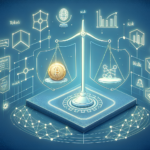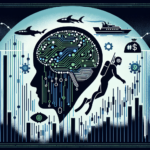What is RWA Tokenization?
RWA, or Real-World Asset, tokenization refers to the process of converting physical assets, such as real estate, art, or commodities, into digital tokens on a blockchain. These tokens are designed to represent ownership or a share of the underlying asset. The allure of RWA tokenization lies in its potential to increase liquidity, enhance accessibility, and streamline transactions. However, as with any financial technology, it brings along a host of risks that must be meticulously managed.
The Importance of Risk Management in RWA Tokenization
Risk management in RWA tokenization is critical for several reasons. It ensures that stakeholders can make informed decisions, minimizes potential losses, and maintains the integrity of the market. Tokenization is relatively new, and while it holds promise, it is crucial to recognize the uncertainties and challenges it poses.
Types of Risks in RWA Tokenization
Understanding the different types of risks in RWA tokenization is the first step toward effective risk management. Here are the primary categories:
1. Market Risk
Market risk pertains to the potential losses that can occur due to fluctuations in market prices. For RWAs, this could be influenced by changes in demand or economic conditions affecting the asset’s value. For example, real estate markets may be impacted by interest rates, local economies, or environmental factors.
2. Credit Risk
Credit risk arises when a party involved in the transaction fails to meet their obligations. In the context of RWA tokenization, this can happen if the issuer of the token defaults or if the asset itself loses intrinsic value. Token holders must assess the creditworthiness of the issuer and the quality of the underlying asset.
3. Regulatory Risk
Given that RWA tokenization operates at the intersection of traditional finance and blockchain technology, it is subject to various regulatory environments. Changes in regulations or compliance failures can lead to significant consequences, including fines, sanctions, or the voiding of tokens.
4. Operational Risk
Operational risk focuses on failures in internal processes, systems, or human error. The tech infrastructure supporting RWA tokenization must be robust. Poorly managed smart contracts or vulnerabilities in cybersecurity can lead to financial losses or breaches of trust.
5. Liquidity Risk
Liquidity risk refers to the difficulty of buying or selling an asset without affecting its price. Tokens representing RWAs may not have active markets, which could complicate the process of selling tokens at the desired price. It’s crucial to evaluate the exchange mechanisms and underlying demand for the tokens.
Framework for Risk Management in RWA Tokenization
Successfully managing these risks requires a comprehensive framework. Here’s a structured approach to risk management in RWA tokenization:
1. Risk Identification
This first step involves recognizing the types of risks associated with the specific RWA being tokenized. Engaging stakeholders in discussions about potential risks can help surface concerns that may not be immediately obvious.
2. Risk Assessment
After identifying risks, the next phase is to assess their potential impact and likelihood. Utilizing quantitative metrics, such as Value at Risk (VaR), and qualitative assessments will provide a balanced view of the risk landscape.
3. Risk Mitigation Strategies
Once risks are evaluated, organizations must develop mitigation strategies. This can include diversifying asset portfolios, enhancing due diligence processes for credit risk, and implementing strict regulatory compliance measures. Institutions involved in RWA tokenization should prioritize cybersecurity measures to safeguard against operational risks.
4. Continuous Monitoring
The landscape of RWA tokenization is constantly evolving, which means that risk management strategies must be regularly updated. Continuous monitoring of market conditions, regulatory changes, and operational effectiveness is essential to maintaining risk management practices.
The Role of Technology in Risk Management
Technology plays a pivotal role in enhancing risk management in RWA tokenization.
1. Smart Contracts
Smart contracts can automatically enforce the terms of transactions and agreements, reducing the likelihood of human error. They help ensure transparency and accountability, which can mitigate several operational and credit risks.
2. Blockchain Transparency
The decentralized nature of blockchain technology offers unparalleled transparency. This transparency can build trust among stakeholders and can be a tool for better compliance with regulatory requirements. It allows for real-time tracking of transactions, enhancing accountability.
3. Advanced Analytics
Leveraging advanced data analytics can provide deeper insights into market trends and potential risks. Predictive analytics can help organizations forecast market movements and assess the financial health of underlying assets more accurately.
Investor Education
Investor education is a vital component of risk management in RWA tokenization. Potential investors should fully understand the assets they are investing in, the mechanisms of tokenization, and the inherent risks. This knowledge empowers investors to make informed decisions rather than relying solely on market speculation.
1. Developing Comprehensive Resources
Companies involved in RWA tokenization should provide thorough resources, including whitepapers, tutorials, webinars, and FAQs. This information can demystify the tokenization process and clarify how risks are mitigated.
2. Engaging with Communities
Engagement with communities through social media, forums, and events can foster a better understanding among potential investors. Sharing insights and gathering feedback can enhance the overall dialogue around RWA tokenization.
Real-World Examples of Risk Management in RWA Tokenization
Several projects currently employ risk management strategies effectively as they explore RWA tokenization.
1. Real Estate Tokenization
Platforms that tokenize real estate often conduct rigorous due diligence to assess property values and outline valuation methodologies. They may also engage independent auditors to provide additional assurance and mitigate credit risk.
2. Art Tokenization
In the art world, companies that tokenize high-value artworks often require provenance verification, ensuring that pieces are legitimate and valued correctly. This approach helps address risks related to asset quality and market fluctuations.
3. Financial Instruments
Some projects are looking to tokenize financial instruments such as bonds or derivatives. In these cases, stringent compliance with regulatory requirements is paramount to minimize the risks associated with market fluctuations and credit issues.
The Future of Risk Management in RWA Tokenization
As the market for RWA tokenization matures, risk management practices will likely evolve. Innovations in technology, changes in regulatory frameworks, and emerging market dynamics will all influence how risks are approached. Staying ahead of these developments will be essential for any organization involved in RWA tokenization.
In summary, understanding risk management within RWA tokenization is crucial for its success. Through careful identification, assessment, and mitigation of risks, stakeholders can navigate this exciting yet complex landscape. By leveraging technology and focusing on educational initiatives, the market can thrive while safeguarding the interests of all parties involved.








